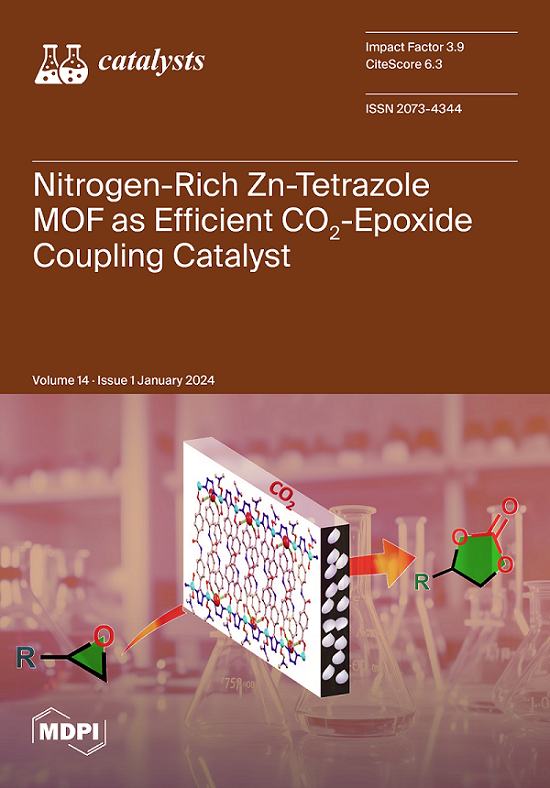100-400 K 时 O2 与还原铈纳米粒子的相互作用:Ce3+ 离子和溶解 H2 的快速氧化
IF 4
3区 化学
Q2 CHEMISTRY, PHYSICAL
引用次数: 0
摘要
傅立叶变换红外光谱主要研究了氧气与还原铈纳米立方体之间的相互作用。此外,还对纳米棒和纳米颗粒进行了比较研究。在 100 K 时,未还原铈上吸附的 O2 只在 Ce4+ 位点上产生分子吸附的 O2。通过 2133-2095 cm-1 处的 2F5/2 → 2F7/2 电子转变带,对 773 K 下被 H2 还原的铈上的 Ce3+ 阳离子进行了监测。各个成分的位置取决于 Ce3+ 环境,包括附近物种(如 OH 基团)的存在。即使在 100 K 时,还原铈上吸附的 O2 也会导致大约一半的 Ce3+ 阳离子快速氧化,包括与 OH 基团和碳酸盐结合的所有 Ce3+ 位点,并同时形成超氧(O2-)和过氧(O22-)物种。在更高温度下,过氧化物直接分解,生成晶格氧。过氧化物转化为氢过氧化物,然后分解为末端羟基。在温度小于 773 K 时抽空的还原样品含有吸附的 H2。其中部分氢即使在 100 K 时也会被快速氧化。本文章由计算机程序翻译,如有差异,请以英文原文为准。
Interaction of O2 with Reduced Ceria Nanoparticles at 100–400 K: Fast Oxidation of Ce3+ Ions and Dissolved H2
The interaction between O2 and reduced ceria nanocubes was mainly investigated using FTIR spectroscopy. Nanorods and nanoparticles were also studied for comparison. Adsorption of O2 at 100 K on unreduced ceria produces only O2 molecularly adsorbed on Ce4+ sites. The Ce3+ cations on ceria reduced by H2 at 773 K were monitored using the 2F5/2 → 2F7/2 electronic transition band at 2133–2095 cm−1. This band possesses a fine structure well resolved at 100 K. The positions of the individual components depend on the Ce3+ environment, including the presence of nearby species such as OH groups. Even at 100 K, adsorption of O2 on reduced ceria leads to fast oxidation of about half of the Ce3+ cations, including all Ce3+ sites bound to OH groups and carbonates, and the simultaneous formation of superoxo (O2−) and peroxo (O22−) species. The remaining Ce3+ sites disappear upon heating up to 348 K. At higher temperatures, the peroxo species decompose directly, yielding lattice oxygen. Superoxides are converted to hydroperoxides, which then decompose into terminal OH groups. Reduced samples evacuated at T < 773 K contain sorbed H2. Part of this hydrogen is also fast oxidized even at 100 K.
求助全文
通过发布文献求助,成功后即可免费获取论文全文。
去求助
来源期刊

Catalysts
CHEMISTRY, PHYSICAL-
CiteScore
6.80
自引率
7.70%
发文量
1330
审稿时长
3 months
期刊介绍:
Catalysts (ISSN 2073-4344) is an international open access journal of catalysts and catalyzed reactions. Catalysts publishes reviews, regular research papers (articles) and short communications. Our aim is to encourage scientists to publish their experimental and theoretical results in as much detail as possible. Therefore, there is no restriction on the length of the papers. The full experimental details must be provided so that the results can be reproduced.
 求助内容:
求助内容: 应助结果提醒方式:
应助结果提醒方式:


